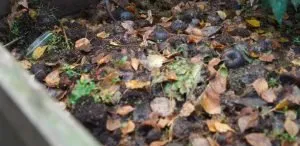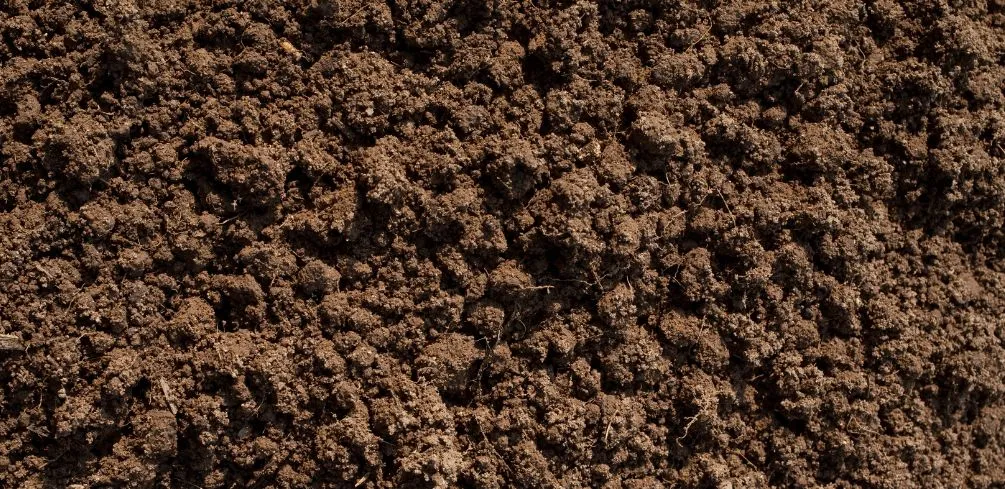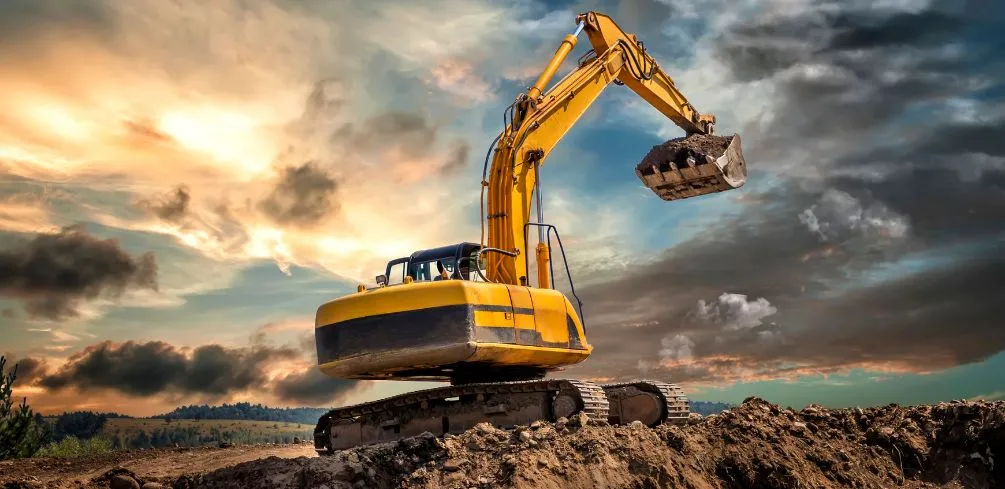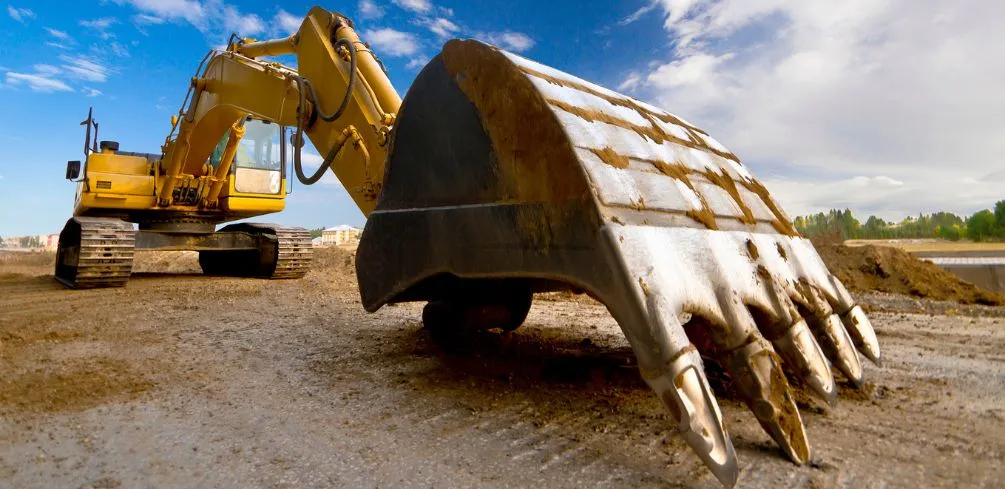Dirt is a natural and necessary part of our lives, but when it comes to getting rid of it, disposing of dirt can be a tricky task. Disposing of dirt responsibly requires knowledge, understanding, and thoughtfulness.
Like a jigsaw puzzle, each piece must be carefully placed in the right spot to build a picture that is satisfyingly complete. This article will provide guidance on how to properly dispose of dirt according to environmental regulations and best practices.
The process of disposing of dirt may seem daunting at first, but with the right information, it can become easier and more manageable. The key is to understand the different options available for disposal so that you can make informed decisions about which option best suits your needs.
Let’s discuss the various methods for disposing of dirt responsibly and safely, as well as offer tips on how to ensure that your disposal methods are environmentally friendly.
By following the guidelines outlined in this article, you can rest assured that your dirt disposal practices are responsible and up-to-date with current regulations. With the right approach, you can reduce your environmental impact while ensuring that you abide by all applicable laws and regulations regarding soil management and disposal. So let’s dive into learning how to dispose of dirt!
Identify Your Soil Type
Identifying the type of soil you need to dispose of is key to successful disposal. Excess soil can come from various sources, such as DIY projects, construction projects, and fill dirt. The type of soil you have will determine the best method for disposal.
The most common types of soils are clay, silt, sand, and loam. Clay soils contain more minerals than other soils and are often found in areas with high rainfall or water saturation. Silt contains a mixture of clay particles and sand and is usually found near rivers or streams.
Sandy soil is composed mainly of small rock particles that don’t retain much water. Loam is dry soil that combines all three types of soil particles: clay, silt, and sand. Loam has the ability to retain nutrients while still providing enough drainage for air to get through the soil.
Knowing what kind of soil you have can help you determine if you should seek out dirt removal services or use other methods for disposal. Consulting a professional prior to disposing of your excess soil may save time and money in the long run.
Local Laws On How To Dispose of Dirt
Once soil type has been identified, it is important to understand the local laws and regulations regarding dirt disposal. Depending on the amount of dirt, a homeowner may need to obtain a permit from the city or county in order to dispose of it properly.
There are several options available for proper disposal:
- Hire a Junk Removal Company: Hiring a professional junk removal company can be an easy and convenient way to dispose of dirt. These companies specialize in hauling away any kind of debris, including dirt. They will often do the work for you, saving time and effort.
- Recycling Companies: Recycling companies can help homeowners recycle their dirt so that it can be reused in gardens or other landscaping projects. This is both cost-effective and environmentally friendly.
- Local Government: Homeowners should check with their local government to see if there are any regulations or restrictions on disposing of dirt in their area. Some cities have specific rules about what types of materials can be disposed of in certain areas and how much material can be disposed of at once.
Knowing local laws and regulations on dirt disposal is essential for any homeowner who plans on removing soil from their property. It’s important to research all available options before beginning a project so that the proper steps can be taken to ensure a safe and efficient disposal.
Junk removal companies, recycling companies, as well as checking with the local government are all viable avenues when considering proper disposal methods for dirt.
Costs And Fees Of Different Dirt Disposal Methods
When looking at how to dispose of dirt yourself, there are a number of options available. The cost associated with each option depends on the size and scope of the job. For example, hiring a junk removal service or dirt removal specialist may be more expensive than taking the material to a landfill.
However, this could be an ideal choice if the dirt consists of hazardous materials. In addition, large construction companies often have their own dumpsters and can provide disposal services at job sites. The cost of using these services will depend on the type and amount of material being disposed of.
For those looking for more cost-effective solutions, there are several options available. Taking advantage of local free dump days is a great way to dispose of dirt in small amounts, as it often does not require any additional fees or permits.
Plus, recycling centers may accept certain types of dirt for no additional cost beyond tipping fees for disposal services. Finally, many municipalities have specific regulations regarding yard waste disposal and may offer free collection programs or discounts on bulk disposal services.
The key to finding the most appropriate method for disposing of dirt is researching all available options and weighing their associated costs and benefits. It is also important to consider any legal requirements that must be met before disposing of materials in order to avoid potential fines or other penalties. With careful consideration, it is possible to find an effective solution that meets both budgetary needs and local regulations.
Donating To Construction Companies Or Landscaping Businesses
Donating dirt to construction companies and landscaping companies is a great way to dispose of it. It can be used for various projects, such as breaking ground on construction sites, filling in various landscaping projects, and more. Table 1 outlines the steps involved in donating dirt to these companies.
| Step | Description | Benefit |
|---|---|---|
| Contact Companies | Reach out to local construction companies or landscaping businesses via phone or email. | Get rid of dirt for free |
| Delivery | Arrange for delivery of the dirt with the company you are working with | Ensure that the right amount of dirt is transferred |
| Finalize Deal | Sign contracts and paperwork finalizing the details of the donation before transfer/delivery is complete. | Formalize agreement between both parties. |
Donating your dirt to these types of businesses helps them save costs since they do not have to purchase materials from elsewhere. They will also benefit from getting larger amounts of material than what may be available at a store or online.
Additionally, this will help reduce waste by reusing materials instead of having them disposed of in landfills. This method can provide a win-win situation for both parties involved.
When donating dirt, it is important to research potential companies and only work with ones that have experience in this area and have good customer reviews. Additionally, make sure that all paperwork is properly filled out prior to transferring/delivering any materials so that there are no misunderstandings about the quantity or quality of material being donated.
With careful planning and execution, donating your dirt can be an easy and efficient way of disposing of it while helping others at the same time.
Renting A Roll-Off Dumpster
Renting a roll-off dumpster is another option when it comes to disposing of dirt. A roll-off dumpster is a large, open-top container that can be delivered to the location where the dirt needs to be disposed of.
The dumpster is filled with the materials that need to be removed and then hauled away for proper disposal. This method eliminates the need for a junk removal truck or other vehicles that might have difficulty navigating tight spaces. It also allows for larger amounts of material to be disposed of at once, making it ideal for bigger projects such as landscaping jobs or demolition work.
The cost of renting a roll-off dumpster varies depending on the size of the container and the length of time needed. In some cases, there may also be additional fees associated with using a roll-off dumpster, such as fuel costs and tipping fees. It is important to research different companies offering roll-off dumpster rental services in order to find one that best fits your needs.
For individuals who only need to dispose of small amounts of dirt, there are other options available such as free pickup services or storage bins at transfer stations. Free pickup services are usually offered by city governments or local organizations, while storage bins at transfer stations provide an easy way to drop off smaller amounts of material without having to rent a full-sized dumpster.
Comparing these options can help determine which one is the most cost-effective and efficient based on individual needs.
No matter which option is chosen, it is important to ensure that all necessary permits are obtained before beginning any project involving dirt disposal. This will help ensure compliance with local regulations and make sure that the job gets done right without any surprises along the way.
Free Dump Days In Your Area
The disposal of dirt is an important concern for many homeowners. In some areas, free dump days are arranged by local councils to help manage yard dirt removal and collection. During these days, individuals can bring their excess dirt to a designated area where it can be disposed of responsibly. This eliminates the need for hazardous DIY fire pits or having to pay for expensive collection services.
When considering how best to dispose of dirt, it is important to consider whether any of it could be reused in the garden or compost pile. Local plant nurseries may also accept donations of soil for their own use, which can be a great way to recycle the material. Additionally, food waste should not be deposited into a compost pile as this will lead to contamination and potential health risks.
In order to ensure that dirt is disposed of in an environmentally friendly manner, homeowners should take advantage of free dump days when available. These events provide a convenient way to get rid of unwanted dirt without creating additional problems in the neighborhood or at home.
By being proactive about disposing of dirt correctly and recycling what can be reused, individuals can help preserve their local environment for future generations.
Posting Listings Online For Free Dirt Pickup
Posting listings online for free dirt pickup can be a great way to dispose of excess dirt. This method requires doing some research and finding online classified sites that accept and promote free dirt listings.
Most general classified sites will have the option to list items for free, but these sites may not be the best choice due to limited visibility. It is best to look for dirt-specific classified sites or those dedicated to home improvement, construction, landscaping, or farming.
The listing should include information about the type and amount of dirt available as well as contact information, so interested parties can reach out. Taking pictures of the dirt pile will help potential buyers visualize what they are getting and encourage them to contact you.
If possible, it is also helpful to provide a pickup truck or trailer for the removal of the dirt, as this eliminates the hassle of loading and hauling dirt for free for those interested in taking it away. Posting listings online is a great way to get rid of excess dirt quickly with minimal effort on your part.
Placing A “Free Dirt” Sign In Your Yard
If you have excess dirt in your yard from a large construction site or project, or you need to dispose of demolition waste or yard waste, one way to do so is by placing a “Free Dirt” sign in your yard. This simple and creative solution can save you time and money, as well as create an opportunity for others to make use of the dirt in your yard.
Here are some tips on how to do this:
- Put up a bright, eye-catching sign that will draw attention. Use bold text and vivid colors to make sure people take notice.
- Make sure the sign clearly states what kind of dirt it is—yard waste, demolition waste, etc.—so people know exactly what they are getting.
- Include clear instructions regarding pickup times and conditions, such as when they can come and whether they need their own tools or transportation.
- Consider hiring a junk removal service to help with the logistics of transporting the dirt away from your property if necessary.
By taking steps such as these, you can make it easier to get rid of unwanted dirt in your yard while also helping out others who may benefit from it. Creating a “Free Dirt” sign is an effective way of disposing of excess soil without having to pay costly fees for its removal or hire expensive services.
Hauling Considerations For Fill Dirt Removal
When it comes to disposing of dirt, hauling considerations are important. Depending on the amount and type of dirt that needs to be removed, there are a few different approaches to getting rid of it.
The most common options include hiring a junk removal company, taking it to a transfer station, or doing it yourself.
| Option | Pros | Cons |
|---|---|---|
| Hiring Junk Removal Company | Fast | Expensive |
| Transfer Station | Affordable | Time consuming |
| Do It Yourself | Free | Heavy lifting |
Hiring a junk removal company is the easiest option but can be expensive. Generally speaking, these companies will take care of all the loading and hauling for a small fee from you and can usually get the job done quickly. However, this convenience comes at a price and may not fit within your budget.
If you’re looking for an affordable option, taking your dirt to a transfer station may be the best way to go. This process involves loading up your dirt in a truck or trailer and transporting it to the nearest transfer station, where they will dispose of it for you.
While this method is more cost-effective than hiring someone else to do it for you, it requires more time and effort on your part.
The final option is doing the job yourself by renting a truck or trailer and hauling away the dirt yourself. This solution is completely free but requires some heavy lifting on your part, involving moving large amounts of soil from one place to another.
If you choose this route, make sure you search online for any restrictions in your area regarding disposing of fill dirt, as there may be certain regulations that need to be followed depending on where you live.
No matter which approach you to decide upon, proper disposal of fill dirt is essential in order to protect our environment from potential contamination due to improper waste management practices or hazardous chemicals entering our water supply systems.
Consider all available options carefully before deciding which route works best for you so that you can ensure that your fill dirt disposal project goes off without incident.
Hiring A Junk Removal Company
Transitioning from the considerations of hauling fill dirt, one may consider hiring a junk removal company to dispose of the dirt. As it is often said, ‘Time is money,’ so instead of making multiple trips with a pickup truck with a bed to haul the dirt away, it is more cost-effective and efficient to hire a professional company to handle the job. There are several advantages to using this service for disposing of dirt.
Firstly, a junk removal company will have access to larger trucks that can handle more material in a single trip than an individual could manage on their own. Secondly, they can provide assistance in disposing of any other items that need to be removed, such as appliances or furniture.
Thirdly, they can help with removing soil from flower beds or other areas where it has been collected over time. Finally, they will take responsibility for proper disposal at municipal facilities or landfills if needed.
To summarize, hiring a junk removal company is often the most cost-effective and efficient way to dispose of the dirt and other items that need to be removed from the property. Here are five reasons why:
- Access to large trucks for transporting material
- Assistance with disposing of appliances and furniture
- Expertise in removing soil from flower beds or other areas
- Proper disposal at municipal facilities or landfills
- Cost-effectiveness in terms of time and money saved * by avoiding DIY removal and disposal of large items.
Taking Excess Soil To Recycling Centers Who Accept Dirt
Recycling centers that accept dirt can be an effective way of disposing of excess soil. Such centers are typically staffed with knowledgeable personnel who can help determine the best means for disposing of any type of soil.
There are several ways to transport dirt to a recycling center, and one should consider the size of the load when deciding which method is most appropriate.
For smaller loads, it may be possible to bring the excess soil in using a shovel or other tool. This method is usually convenient and easy, as only minimal equipment is needed to move the dirt from one location to another. For larger loads, it may be necessary to use a truck or trailer with a large capacity bed in order to transport enough soil fill.
When bringing soil to a recycling center, all excess material must be dry. This will ensure that both transportation and disposal are done safely and correctly. Additionally, having the soil already dry will enable it to be recycled more quickly and efficiently by the facility staff.
By following these guidelines when transporting excess soil for disposal, individuals can ensure that their task is completed properly and in a timely manner.
Finding Places To Dump Dirt For Free Near You
Finding free places to dump dirt can be a difficult task. However, it is possible to find local spots where unwanted soil can be taken for free. One of the most popular places for disposing of dirt is garden centers and nurseries.
Many offer soil disposal services or a space where people can take dirt from landscaping or construction projects. Another great option is wildlife preserves, which often have areas devoted to soil disposal. These locations are ideal because they are usually well-maintained and provide an environmentally friendly way to get rid of extra dirt.
Finally, homeowners may want to consider using their own yards for future backyard projects that require soil disposal. This approach eliminates the need for transportation and hauling costs associated with taking unwanted soil elsewhere.
Separating Contaminated Soil From Other Materials Before Disposing Of It
Before addressing the issue of how to dispose of dirt, it is vital to consider separating any contaminated soil from other materials. This can help reduce potential environmental or health risks associated with hazardous materials. Mining permits may be required for large-scale operations, and some homeowner’s associations have regulations on what can be placed in local landfills.
The following table outlines the different types of materials that should be separated from each other when disposing of dirt:
| Type of Soil | Description | Separation Required |
|---|---|---|
| Contaminated | Soil containing hazardous materials | Yes |
| Uncontaminated | Soil without hazardous materials | No |
| Organic | Soil containing organic matter | Yes |
| Inorganic | Soil without organic matter | No |
Separating contaminated soil from other materials is essential to avoid potential environmental or health risks. Contaminated soil may contain hazardous materials that could potentially leach into nearby water sources or infiltrate the air if not properly disposed of.
Additionally, organic soils should also be separated as they will decompose over time and release carbon dioxide and methane gas into the atmosphere if not disposed of properly. Inorganic soils do not contain any organic matter and therefore do not require separation before disposal.
It is important to understand the type of soil being disposed of in order to ensure safe and responsible disposal methods are used. By separating contaminated soil from other materials, any potential risks associated with hazardous materials can be avoided.
Additionally, by separating organic soils from inorganic soils, any potential issues related to decomposition and gas emissions can be prevented.
Contaminated soil can be separated in several ways, depending on the type and level of contamination. Here are a few:
- Excavation
- Physical separation
- Chemical separation
- Bioremediation
- Thermal treatment.
Recycling Options For Leftover Soil And Dirt
Recycling options for leftover soil and dirt are available for those looking to dispose of their waste in an environmentally friendly manner. Dumping dirt into a landfill is not only illegal in many jurisdictions, but it also causes severe environmental damage.
Clean dirt, with no contaminants or other hazardous materials, can be recycled and used as topsoil for new construction sites. The recycling process involves removing the organic material from the soil, such as twigs and plant material, then grinding it down to a finer texture before adding nutrients back into the soil.
This increases its fertility and allows it to be reused as topsoil in landscaping projects.
Another recycling option is to donate leftover soil to local schools or community gardens. These organizations often need additional soil for gardening projects, and this is an excellent opportunity to help out the environment while reducing your waste costs.
There are also several companies that will recycle your leftover soil and turn it into compost or mulch that can be used in gardens or landscaping projects.
When disposing of leftover soil and dirt, it is important to take advantage of all available recycling options so that materials do not end up in landfills where they could cause environmental harm. Taking the time to research which recycling options are available in your area can help save money and reduce your environmental impact at the same time.
Weighing The Amount Of Dirt You Need To Dispose Of
Though it may not seem like the most exciting task, accurately measuring the amount of soil or dirt you need to dispose of is a crucial step to successfully disposing of your dirt. It is important to understand the size and weight of the dirt you have so that you can determine how many trips you’ll need to take to get rid of it all. Though some may think this process is tedious and time-consuming, it is actually quite simple and straightforward.
To begin, start by gathering any necessary materials such as a shovel, wheelbarrow, tape measure, and scale. You can then use these tools to measure the area with soil or dirt and estimate its overall size and weight.
If possible, try to divide your estimation into sections so that it’s easier for you to keep track of each area’s measurements. Once all areas are measured, move on to weighing them using a scale or other similar device. This will help you calculate an approximate weight for each section.
By taking these steps, soil takers will be able to better understand how much dirt they need to remove from their property. This information can then be used when determining what types of vehicles would be best suited for transporting the dirt away from the property in one or multiple trips.
To sum up, measuring and weighing the amount of dirt needed for disposal is an essential part of making sure it gets done correctly and efficiently.
Frequently Asked Questions
What Is The Difference Between Contaminated Soil And Regular Soil?
Contaminated soil and regular soil can both be found in most landscapes. However, there are distinct differences between the two that must be taken into account when disposing of dirt. These include:
- Physical characteristics – Contaminated soil typically has a different physical appearance than regular soil, such as an unusual color or texture.
- Chemical composition – The chemical composition of contaminated soil is usually different from regular soil due to contamination from industrial processes, hazardous materials, and other pollutants.
- Health impacts – Contaminated soil can have serious long-term health effects on humans and animals if it is not properly disposed of or treated to reduce the levels of contaminants present in the environment.
- Disposal methods – Unlike regular dirt, contaminated soil requires special disposal methods to ensure that the environment is safe and free from potential hazards.
Knowing the differences between contaminated soil and regular dirt is crucial when attempting to dispose of it safely and responsibly. Proper disposal techniques should always be used to ensure that any contaminants present in the soil are not released into the environment where they could potentially cause harm or damage to surrounding ecosystems.
It is also important to note that some states have specific regulations regarding the proper disposal of contaminated soils as well as other hazardous materials, so it is important to research these regulations before attempting any disposal on your own property or elsewhere.
How Do I Determine If My Local Laws Prohibit Dirt Disposal?
When it comes to the responsible disposal of dirt, one of the first steps is to determine if local laws prohibit such practices. To achieve this goal, there are a few key considerations.
Firstly, it is essential to gain an understanding of the difference between contaminated soil and regular soil. Contaminated soil contains hazardous materials that can be detrimental to human health or the environment if not managed properly. Regular soil does not contain any hazardous materials and may be disposed of in accordance with local regulations.
To ascertain whether dirt disposal is allowed, it is necessary to understand the local regulations in place. This can be easily accessible by:
- Contact your local environmental agency: they can provide detailed information on disposal requirements and restrictions in your area.
- – Calling their office and asking for an appointment or speaking directly with a knowledgeable representative.
- – Visiting their website or reading through relevant documents related to dirt disposal restrictions in your area.
- Consulting a professional: engaging a qualified expert can help you navigate the complexities of disposing of dirt responsibly and within the law. They will also be able to advise on any applicable permits which may need to be obtained before disposing of dirt from your property.
- Reading local press/newspapers: these sources often report on changes in legislation that may impact dirt disposal practices in your area. They may also include notifications about upcoming events where you can discuss any questions or queries you have with representatives from local authorities or environmental agencies.
By following these steps, individuals can acquire essential knowledge about the laws governing dirt disposal at a local level, thus enabling them to take appropriate action when it comes to disposing of dirt within their community safely and responsibly.
What Happens If I Exceed The Amount Of Dirt I Need To Dispose Of?
Exceeding the amount of dirt needed to be disposed of can be a tricky situation, as there are many factors that come into play. Ensure to understand local laws and regulations regarding the disposal of dirt, as well as any fines or penalties associated with exceeding the amount of dirt allowed for disposal.
Moreover, it is essential to consider the potential environmental consequences of disposing of too much dirt.
Local laws and regulations will dictate whether or not it is permissible to dispose of more than the stipulated amount of dirt. Depending on the jurisdiction, different rules and city regulations may apply; for instance, some areas may not permit additional dirt disposal at all, while others might require permits or fees for extra dirt. Furthermore, fines and penalties may also be imposed if an individual exceeds the allowable limit for disposing of dirt in their area.
It is important to note that even if it is legally permissible to exceed the amount of dirt needed for disposal, environmental consequences must also be taken into consideration. Excessive amounts of soil being removed can have a negative impact on ecosystems and natural resources in an area.
This could include soil erosion, contamination of nearby water sources, disruption of wildlife habitats, and other ecological issues. Therefore, when determining how much soil needs to be disposed of in an area, it is important to consider not just legal restrictions but also the potential environmental effects that could result from such actions.
Are There Any Safety Considerations When Hauling Fill Dirt?
Hauling fill dirt comes with certain safety considerations that must be taken into account. It is important to understand these considerations in order to protect both people and the environment when disposing of dirt.
The following are some key safety points:
- Wear protective gear while handling dirt, such as gloves, dust masks, and safety glasses.
- Make sure to use a vehicle that is suitable for the task; it should be properly maintained, with functioning brakes and tires that are in good condition.
- Ensure that the load does not exceed the vehicle’s capacity or weight limit to avoid accidents or damage to the roads.
- When transporting dirt over long distances, take regular breaks so that you can remain alert and focused on driving safely.
Additionally, it is essential to take into account any local environmental regulations when hauling fill dirt. This includes regulations related to air quality, water pollution, hazardous waste disposal, and other relevant regulations in the area where you plan on disposing of the dirt. Knowing these regulations will help you ensure that your actions do not have any negative impacts on the environment or public health.
It is also important to consider where you will be disposing of the dirt since improper disposal can have serious consequences for both people and nature alike. Make sure to research different options, such as landfills or recycling centers, before making a decision on where to dispose of your fill dirt safely and responsibly.
By taking all of these points into consideration when hauling fill dirt, you can ensure that you are protecting both yourself and the environment while disposing of this material safely.
Are There Any Additional Fees Associated With Renting A Roll-Off Dumpster?
When considering the disposal of dirt, an important consideration is whether there are any additional fees associated with renting a roll-off dumpster. This is a viable option for many people, particularly those who do not have access to other disposal options.
The cost of renting a roll off dumpster will depend on several factors, including:
- The size and capacity of the dumpster;
- The type and amount of material being disposed of;
- The length of time that the dumpster is needed;
- The location where the dumpster will be placed.
In some cases, rental companies may also add additional fees to cover specific services such as delivery and pickup. These fees can vary greatly depending on the company and should be taken into account when budgeting for the disposal project.
Furthermore, it is important to ask about any special requirements or restrictions that may apply in order to avoid unexpected charges during or after the rental period.
Finally, it is recommended to compare prices from different companies before committing to a particular option in order to ensure that you are getting the best possible deal for your particular needs. It is also helpful to check for discounts or promotions that may be available in order to reduce costs even further.
Taking these steps can help make sure that you pay only what is necessary for your dirt disposal project without any unexpected costs or fees.
Repurpose The Dirt – DIY Projects
There are many other ways you can use dirt. You can dump dirt and create a landscaping or construction project in your backyard play area. Something fun for the kids to play on or even a DIY fire pit for adults to sit back and relax.
The best thing is you then don’t have to worry about removing the dirt from your property and having to find someone that accepts dirt.
Conclusion
The disposal of dirt is an important consideration when completing any project. Understanding the difference between contaminated soil and regular soil, as well as local laws governing the disposal of dirt will help ensure a safe and successful project.
It is also important to be aware of safety considerations when hauling fill dirt and any additional fees associated with renting a roll-off dumpster.
Overall, proper preparation and understanding are key when it comes to disposing of dirt. Knowing what type of soil you are working with, following all local laws, being mindful of safety measures, and researching dumpster rental fees are all important steps to take before beginning your project. These steps can save time and money and ensure that the environment remains clean.
Therefore, in order to properly dispose of dirt in an efficient manner that is both cost-effective and environmentally friendly, it is essential to understand the differences between contaminated soil and regular soil, research local laws regarding disposal regulations, consider safety measures while hauling fill dirt, and factor in any additional fees associated with renting a roll-off dumpster.
Taking these steps will help ensure a successful project from start to finish. Also, make sure you know the difference between dirt and soil, as one is a lot more valuable to others.











